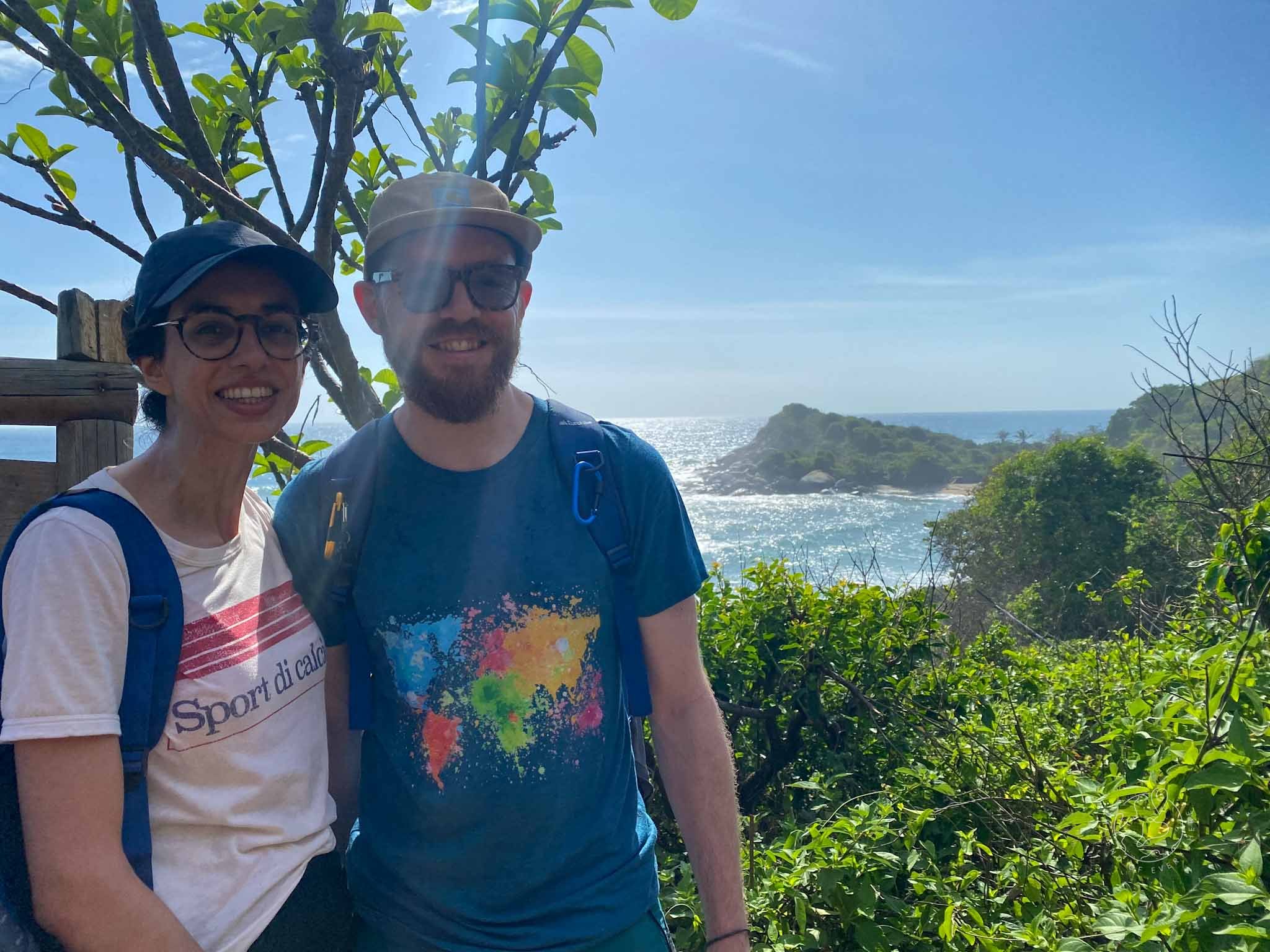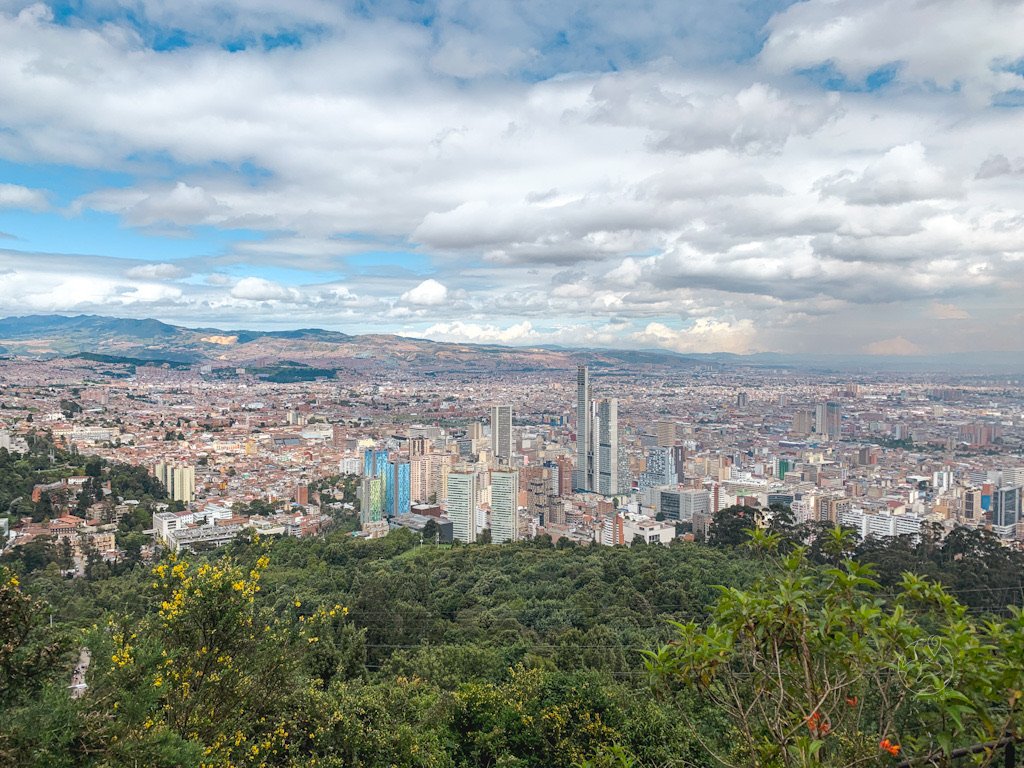Caribbean Paradise: visiting Tayrona National Park
Credit: Levi Ari Pronk via Unsplash
Tayrona is surely the poster boy for Colombian tourism. It was certainly one of the first places I knew of when we started planning our trip to the country. Picture idyllic beaches only reachable via trekking through dense jungle… it sounds like a scene from an 18th century novel, the kind of exciting expedition that is lost on the average holidaymaker like us in modern world.
Where the foothills of one of the highest coastal mountain ranges in the world, Sierra Nevada de Santa Marta, meet the impossibly blue Caribbean sea, you’ll find sandy white beaches surrounded by mangrove swamps and lush tropical forest. This is Tayrona National Park, and we couldn’t wait to get there.
Our first overnight bus: San Gil to Santa Marta
Having put ourselves far away in the mountains in Barichara, it was another fairly sizeable journey to our next destination. We hopped on a collectivo back to San Gil, taxi’d across town to the main bus station and from there we waited for an overnight bus to Santa Marta. The 7pm departure time came and went. We asked at the desk and were told the bus was delayed. So we waited. And waited. Anxiously pacing around, checking the departure gates every few minutes, sure we would miss the announcement. Two hours later, we spotted the bus arriving and ran out to climb aboard.
So, how was our first overnight bus of the trip? Awful! For some reason the seats were tilted forward making it almost impossible to sit comfortably, let alone sleep. Add to that the English-Colombian family with four kids that sat behind us. The dad was constantly nagging the kids about something, and it’s quite hard to tune out the only voice you understand. At some point one of the kids spilt their water (at least I hope it was water) which ran forward under the seats and soaked our bags. So safe to say we arrived in Santa Marta a little tired, fairly grumpy, and absolutely ready for our bed.
But there was still further to go. Everything we read about Santa Marta didn’t endear us to staying there, and as we were in the area to go to the National Park we thought the closer we stayed to the entrance the better. So as we adjusted to the heat and humidity of the Caribbean coast, we looked for onward transport towards the beach town of Palomino. In our exhausted state we allowed ourselves to be shepherded onto a bus. It turned out to be a tired tourist mistake as we paid about £3.70 (20,000 COP) each for the journey which, we realised on the way back when we were a bit sharper, should have been £1.50 (8,000 COP) each. Every penny lost feels devastating when you are on a tight budget!
A little over an hour later we were in a cute cabin on the edge of Tayrona National Park, a stone's throw from the El Zaino entrance. We spent the afternoon recovering from the long journey and looking forward to our first beach day of the trip.
Inside Tayrona National Park
Tayrona National Park encompasses an area of approximately 150 square kilometers and extends from the foothills of the Sierra Nevada de Santa Marta to the Caribbean coastline. The park features a diverse range of ecosystems, including rainforests, mangroves, and coral reefs. Majestic mountains, deep valleys, and picturesque beaches await travellers here, offering a unique blend of landscapes to discover.
To help preserve this little corner of paradise, the park is closed to the public 3 times a year. This is generally in January, June and October - it’s quite hard to find information on exact dates! The best we could find is this blog on Yachay Tayrona website. So it happened we arrived the first day the park reopened after the June closure.
The Park’s El Zaino entrance opens at 7am. Being located a 2 minute walk away meant we had time to have breakfast and join the short queue at around 7.10am, and were inside the park by 7.30am. We did consider if this was really necessary as we could have done with a lie in! But we are so glad we did this as the most enjoyable time we had on the beach was the first few hours.
On entering, we jumped on a short shuttle bus that takes visitors along a bumpy dirt road from the entrance gates to the trail head where we would begin our walk through the jungle.
Hiking to Cabo San Juan
One of the highlights of visiting Tayrona National Park is embarking on the scenic hike from El Zaino to Cabo San Juan. The trail took us through lush jungles, across rivers, and alongside coastal cliffs.
The path was well marked and quite obvious, although a little muddy and challenging at times with steep ascents and decents. As we hiked, we witnessed nature in all its glory, with the sounds of birds and monkeys echoing through the trees. Not that we saw any! We did see more than our fair share of centipedes and geckos though. Being there early meant few other people on the trail, so we felt properly immersed in our surroundings.
All in all the journey took us about 2 hours, with stops along the way to admire the scenery, the smaller beaches and lots of rehydration! Until that point I don’t think I had ever sweated so much in my life - unfortunately a sentence I would say a lot over our time in Colombia! But it’s an easy price to pay when you know there is a refreshing dip in the sea waiting for you at the end!
A Day on at the Beach
Upon reaching Cabo San Juan, we were greeted by one of the country’s most iconic beaches. With its crystal-clear turquoise waters, powdery white sand, and swaying palm trees, Cabo San Juan is a tropical paradise. The beach is divided into two distinct sections, joined together by a small island in the middle from which the famous double-bay picture is taken.
As mentioned earlier, we visited the park on the first day after reopening. So there were no overnight visitors to share the morning beaches with… in fact, there were only the handful of people who had entered before us and hiked through quicker than us.
We spent the morning relaxing on the beach, taking it in turns to dip in the sea. There are plenty of beaches within Tayrona National Park, however San Juan is the preferred option because the waters are safe to swim in. Safe… but still rough, as I found out. Walking back out of the water after a little paddle, a wave crashed on the back of my knees and brought me down! A grazed knee was the extent of the damage done, but a fair warning that the ocean gets pretty rough in these parts!
Later on in the day as the beach filled up we began to see why so many guide books recommend staying the night in the park. It did get a bit uncomfortably full.
Accommodation options at Cabo San Juan range from rustic hammocks to eco-huts, all bookable at the entrance gate as you arrive. This allows visitors to spend the night in this idyllic setting and wake up to the sounds of crashing waves. In all honestly, it looked a little too basic for us - not quite ready to sleep on a hammock, maybe when we are a bit further into travel life!
The beach getting crowded didn’t stop us bumping into someone we know! My former boss, Simon, was holidaying in Colombia at the same time as us and this happened to be the one day our itineraries overlapped, as we were travelling around the country in opposite directions. It was nice to catch up on a beach over a few beers and swap holiday stories and tips!
Around 3pm we started on the trail back - day visitors have to leave the park by 5pm, another reason to get there early. Safe to say the walk back was not as fun as the way in! With a cold shower and a beer calling, we raced out in about 90 minutes.
Tayrona, as promised, was an extraordinary journey into the heart of nature. It’s safe to say we were hooked on our first taste of the raw beauty of Colombia’s Caribbean Coast.
*Affiliate link - if you click this link and book we will earn a small commission. There is no extra cost to you!
Related Content
Pin this blog post to read later…















